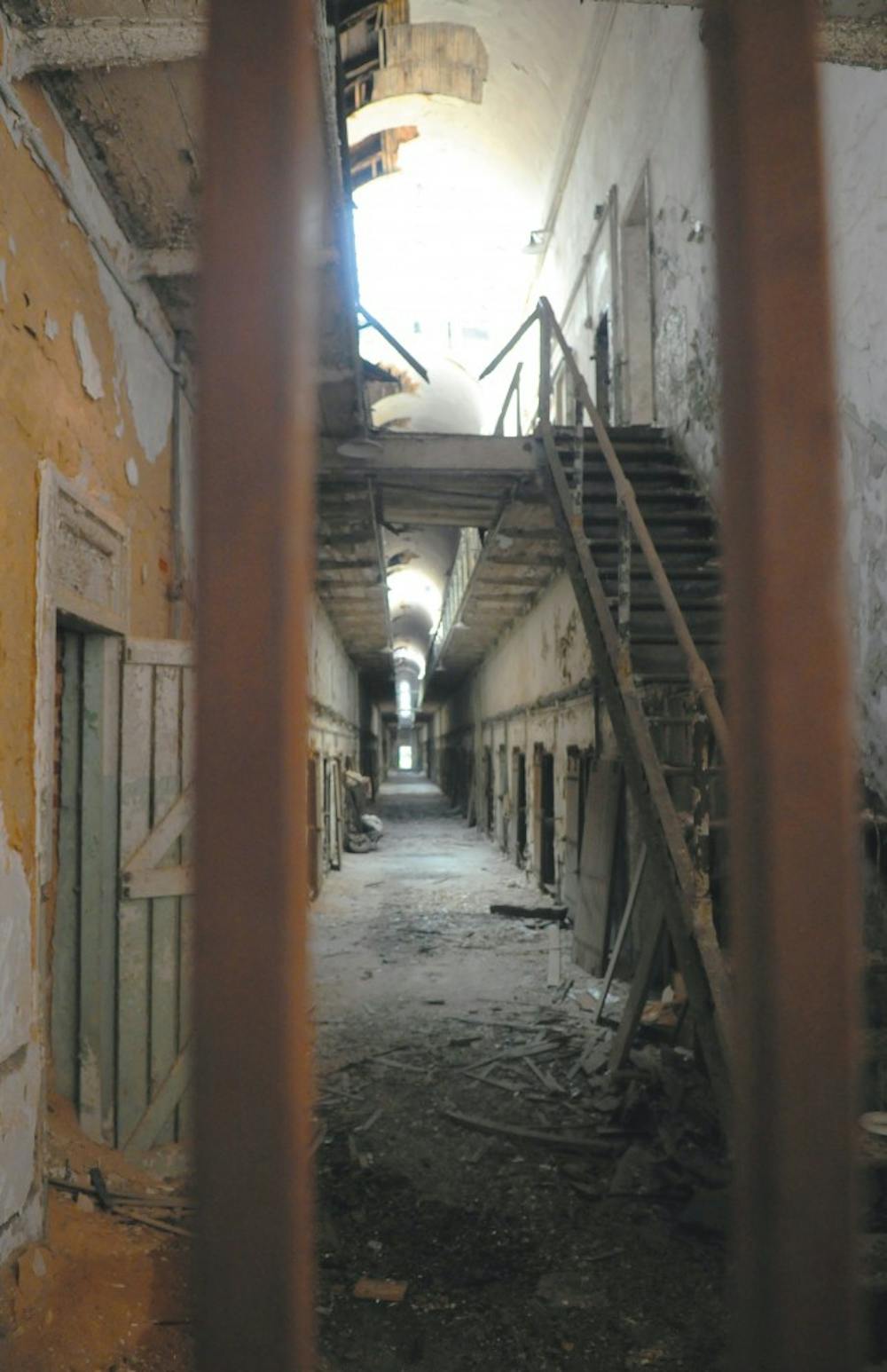
For two years now, Katherine Toder has been getting paid to scare people.
Every night during the Halloween season, Toder spends between seven and 10 hours trying to terrify everyone she sees.
Her costume involves a lot of makeup, including fake facial deformities and what she describes as “a very bulbous, bloody and broke-up nose,” said the 2008 College graduate. The work is very physical, and Toder says she has to do “a lot of stretching and limbering up to scare people.”
Toder is now a scary prison doctor working in the prisoner intake of The Gauntlet, a section within Eastern State Penitentiary’s “Terror Behind the Walls.”
Because the former prison isn’t far from campus, Toder says many of the screaming visitors are dressed in Penn sweatshirts. Every year, Eastern State sees about 250,000 people, many who are looking for a thrill.
Eastern State’s connections with Penn go back to its inception, with Ben Franklin’s Philadelphia Society for Alleviating the Miseries of Public Prisons playing an integral part in discussion of the ideals of reforming rather than punishing criminals.
Since the prison was opened in 1829, it has maintained it Penn connections as both current students and graduates remained involved in the historical site to this day.
Historical sights
When Eastern State was an operational prison until 1971, many infamous prisoners, including Al Capone and Willie Sutton, were imprisoned within its walls.
The large castle-like structure is now a historical site and features exhibits such as the renowned “Terror Behind the Walls.”
“I think that it is an amazing American site — [it’s] really hard to describe how powerful it is,” Sally Elk, Eastern State president and CEO said. “I think our visitors come away from it having experienced something that’s really authentic.”
Elk had just graduated from PennDesign in 1984 after studying historic preservation when she began working at the Philadelphia Historical Commission. At the commission, Elk learned that there were plans to convert Eastern State into housing and retail space.
“With my training at Penn there were some ways that we tried to work with leaders in the community and architectural history, criminal justice, neighborhood groups — people that didn’t want to see this development happen,” she said.
At that time, Eastern State had been abandoned for 20 years. The prison that had been revolutionary in 1829 was falling apart and couldn’t adapt to modern technology.
“It was in very deteriorated condition,” Elk said. “So how do you open up a place that’s a mess?”
She drew on her Penn education to restore and maintain the property so that visitors could safely tour and experience the historic site.
The restored site now offers internship opportunities for undergraduates like Mackenzie Warren, a College sophomore who has worked there as an administrative intern since her senior year of high school.
While working at a historic site has its perks, the job can get scary. Easy tasks like getting supplies out of a closet can be terrifying in a centuries-old jail, Warren said.
Aside from dealing with the “ghosts,” she also organizes historical documents. Recently, she catalogued articles from the 1917 issues of The Umpire, an inmate newspaper. In the future, Warren will also catalogue the prison’s oral histories, which include interviews with past inmates, guards, chaplains and wardens.
Terror
For many, the haunted house’s appeal peaks around Halloween.
“Terror Behind the Walls” has been running for 21 seasons and ranks among the top 10 haunted attractions in the country. It includes exhibits such as “The Gauntlet,” “The Infirmary” and “Night Watch.”
College junior Amanda Laura visited the haunted house around Halloween this year because she had heard so much about it.
“It wasn’t as scary as I thought it would be,” Laura said. However, she admitted, “I still used my friend as a human shield the entire time.”
Toder remembers going to “Terror Behind the Walls” as a freshman. “I went with my whole floor … [We went] to see the show and also to learn a little more about the building.”
“There really is a huge age range — I see some little kids coming through,” she said. “It’s always great when they’re really loving it … and their parents getting scared at things. That’s probably my favorite.”
For Laura, the setting of “Terror Behind the Walls” is what sets it apart from other haunted houses. “You could tell that it wasn’t completely artificial,” Laura said. “It made it a lot scarier — because it was a real prison.”
Reforming the classroom
While Eastern State can be terrifying, the history of the site makes it educational as well.
“We try to cater our guided tours to the subject matter that you might be studying in class,” Elk said, adding that “the penitentiary fits nicely into [many classes.]” Students studying architecture, history and criminology can often find overlap between their studies and the penitentiary.
Those who work at Eastern State are always trying “to figure out the true history,” Warren said, because in her experience there is always more history to discover.
According to its website, over 60 paranormal experts investigate the prison every year and have found some evidence of paranormal activity. In the 1940s, inmates and officers did report traces of unexplained activity.
For those interested in city history and planning, Eastern State allows visitors to look into the history of Philadelphia and watch “the evolution of the city,” Warren said.
“You wouldn’t normally think to go to a prison,” Warren said. “But it’s a really cool place.”
The Daily Pennsylvanian is an independent, student-run newspaper. Please consider making a donation to support the coverage that shapes the University. Your generosity ensures a future of strong journalism at Penn.
DonatePlease note All comments are eligible for publication in The Daily Pennsylvanian.





